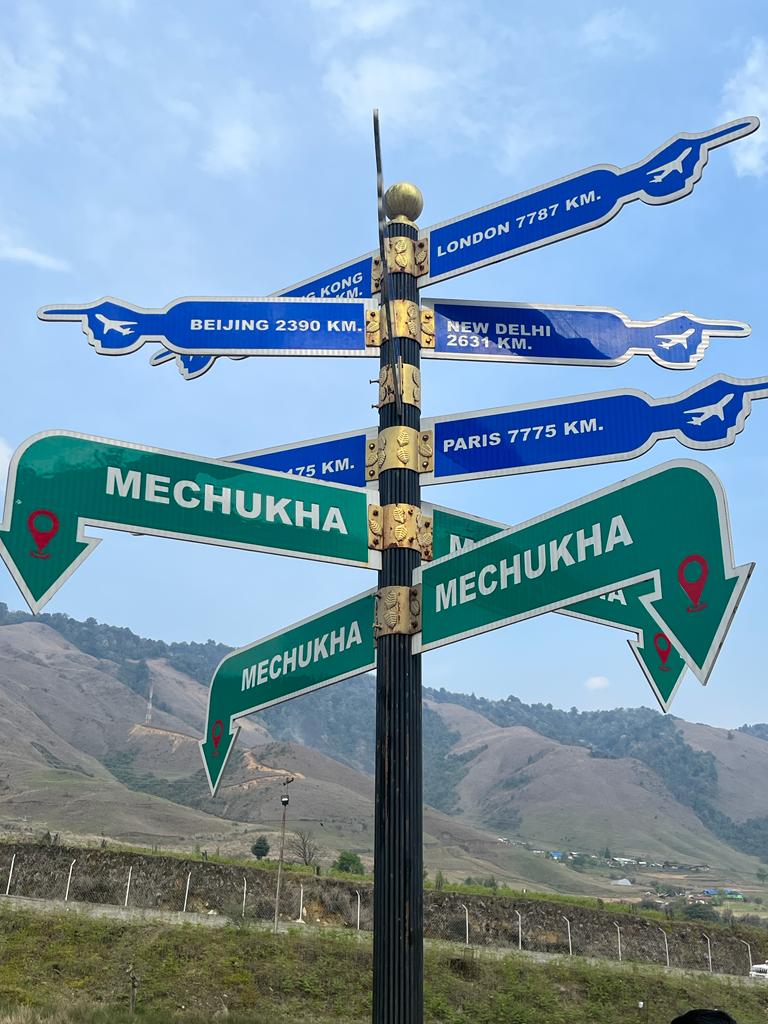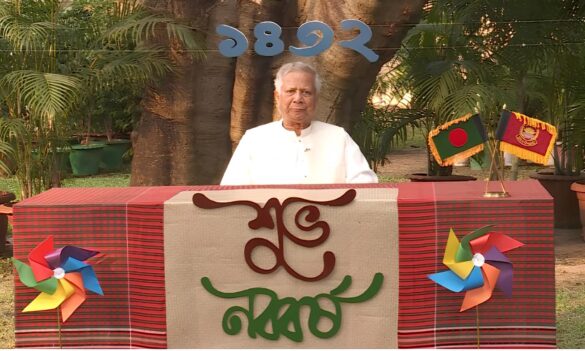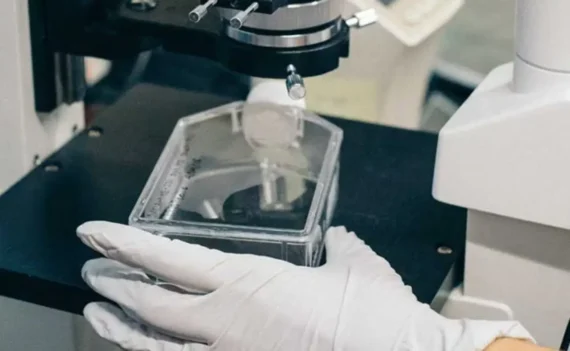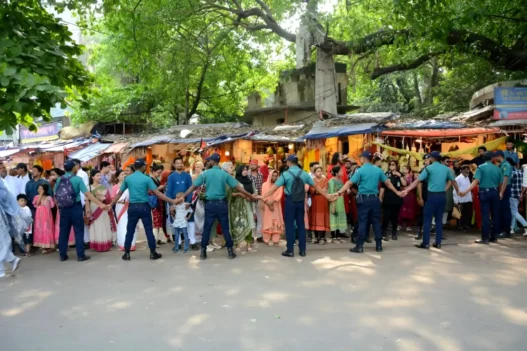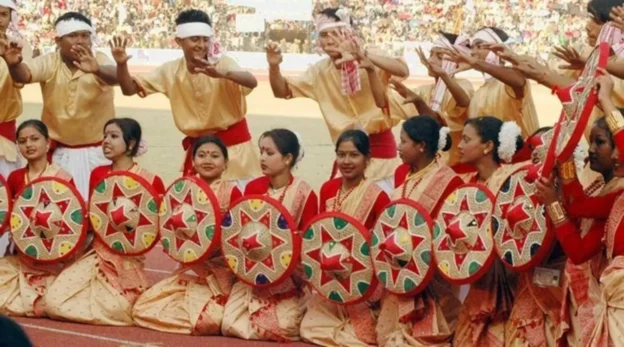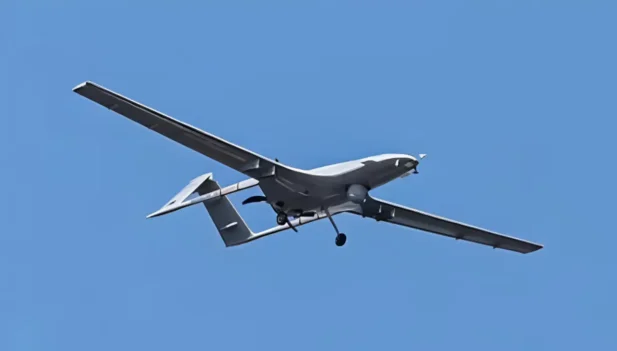
Tourism in Mechuka: It is undeniable that the lesser-known places offer the most meaningful encounters. Such sites pacify the commotion of one’s everyday life and drag you into their paced living for a lifetime of desire to return. One such lesser-known and unexplored region is Mechuka in Arunachal Pradesh. Its landscape replicates the tranquil nature of the people that inhabit it. Mechuka Valley is home to the Memba tribe of Arunachal Pradesh, who practise Mahayana Buddhism. In the vast expanse of the meadows, surrounded by snow-clad mountains, Mechuka appears as a utopia for travellers. In this arcadia, Norbu Naksang and his wife Yangjom Kigar run a modest six room-homestay called ‘Potala Homestay’. It is named after the largest monastery in the world, situated in the present-day Tibet Autonomous Region.

Located just 29 km from the McMohan Line, Line of Actual Control, and 49 km from the district headquarter in Tato, it separates the Indian territory from China. The other tribes also inhabiting the place are the Adis (Bokar, Libo, Ramo) and Tagin. Mechuka is a colloquial term that has become prevalent among the locals. However, initially, it was called Menchukha, which is an amalgamation of three words, where ‘Men’ means ‘Medicine’, ‘Chu’ means ‘River’, and ‘Kha’ means ‘Snow’, literally translating into “the land with medicinal snow-fed water” aka the Yargyap Chu river. Pasang Dorjee Sona, representing the 33rd Mechuka Assembly constituency and former Parliament Secretary of Tourism in Arunachal Pradesh, remarked, “The place is so remote that tourism is the only industry that can flourish. It could actually be a game-changer.”


Since tourism, a service-oriented sector, has made rapid strides globally in terms of gross revenue and foreign exchange earnings, the industry has been imminent in generating employment opportunities and delivering infrastructure in the tourism-oriented regions. In Arunachal Pradesh, Mechuka has emerged as one such tourist destination. With its unparalleled landscape, glistening meandering rivers, expansive history of heterogeneous spiritual and cultural amalgamation, and diverse options of adventure, Mechuka promises a souvenir of memories and experiences. The majority of the people who belong to the Memba tribe follow Mahayana Buddhism and are known to be amiable. Many in the community take up business and trade as their vocation. A large number of them run homestays and allied activities, as hotel lodgings are not a common sight in Mechuka.

Homestays: an alternative sustainable tourism product
Various studies have found that homestays enhance community participation in tourism as well as provide a platform for enabling the locals to derive direct benefits from it. Norbu first set up his homestay Potala in 2015 while also working small contracts here and there. His homestay is located right at the entry gate to Mechuka. The words “Potala Homestay” are prominently displayed on a banner outside his house.
Norbu is of a calm personality, and his social obligations keep him busy. On the other hand, his wife exhibits an eclectic nature; together, they run a 6-room homestay adjacent to their house. “Our family works together to look after the homestay,” said Norbu’s daughter, who was spending her summer break helping her mom and dad manage the homestay.

Norbu is also currently the President of “Mechuka Eco-Tourism and Conservation Society (MECS)”, an NGO whose major activities focus on protecting and promoting the age-old socio-economic and cultural heritage of Mechuka to create awareness among the locals and the tourist engendering an eco-friendly environment. Tourists come in every other day and mostly spend a night or two in Mechuka. These tourists are mainly locals from the neighbouring towns of Pasighat, Aalo, and Assam, looking to escape the sweltering heat and the clamours of cities.
Given the opportunity of making Mechuka a revered tourist destination, efforts by both the Government and the communities in the region have been pertinent. In 2015, the Government of Arunachal Pradesh introduced the restructured ‘Chief Minister’s Paryatan Vikas Yojana (CMPVY)’ scheme to materialise the vast untapped ‘Adventure-Tourism’ potential in Mechuka. During this significant development, Adventure@Mechuka was introduced in 2012. Consequently, the festival augmented into one of the most sought-after tourism festivals in Arunachal Pradesh, inviting movie stars such as Salman Khan, Arjun Rampal, and others to flag off the events. Within a short span of time, tourism became synonymous with Mechuka. The number of homestays since 2015 under the CMPVY jumped from 5 to 45 registered and several more unregistered ones. “At any given time, there are 500 rooms available under different categories,” adds Sona.
Homestays crucially act as an alternative tool for sustainable community development. Being locally owned and operated, homestays facilitate the aspiration of the residents to become entrepreneurs on their own terms. Besides the economic incentives, homestays also contribute to maintaining social and religious responsibilities by the communities and the tourists. “In my capacity, I inform the tourists of all the major tourist attractions they can visit. This way, they take cognisance of the place’s history and culture and appreciate it better,” said Norbu.

The restructuring of the CMPVY scheme by the Government of Arunachal Pradesh proposed to finance ‘Value addition’ made to the homestays. Accordingly, in 2015 staff from the Directorate of Tourism conducted awareness camps in Mechuka. It informed the people of Mechuka’s potential to be a tourist destination and that it would require tourist operators, guides and homestays to work in tandem. They greatly emphasised creating a hospitable environment for the tourists.
Norbu mentioned, “The Directorate of Tourism advised us to institute an NGO registered under the Department of Tourism, Arunachal Pradesh, in order to regulate tourism activities in the region. This is how Mechuka Eco-Tourism and Conservation Society (MECS) came to be.” MECS is an NGO that aims to promote, first and foremost, ‘Clean Mechuka, Green Mechuka’. It also administers all working Homestays in Mechuka.
However, despite the number of awareness camps on tourism held in Mechuka, Norbu remarked, “The locals were extremely apprehensive when the tourists first flocked to the region in numbers. The influx of tourists brought in the problems of pollution, littering and overcrowding that the locals were not used to and therefore, responsible tourism became the need of the hour.”
Emphasis on responsible tourism
The MECS stressed that tourists should carry their own garbage and avoid littering. They organised cleanliness drives in coordination with the Swachh Bharat Abhiyan, often supported by army personnel occasionally. The District Tourism Officer, under another initiative, has asked the homestay owners to pay the Tourism Department a sum of INR 5 for each tourist that stays with them. This ensures the amount is passed to the MECS, which takes on the cleanliness drive programmes. Moving forward, a plant that processes plastic waste and converts it into fuel has also been set up. “The plant will run for 10-15 years in full capacity”, says PD Sona, MLA Mechuka Constituent Assembly.
Further, the Assistant Director of Tourism and their team annually organise additional awareness camps. The locals are trained in various skills ranging from homestay operations, tour operators, tour guides, and outdoor activities such as camping, trekking, and pitching tents to cooking. Norbu concurred that such regular interactions incentivise homestay owners to advance their entrepreneurial ventures. It provides additional income, increases interaction with different communities and cultures, bolsters the preservation of their heritage and culture, supports tourism for the communities’ well-being and diversifies their household income sources.

Moreover, the locals are educated on their own cultures, through which the villagers can aid in navigating the tourists better and in a homogenous way. New circuits have also been created to offer a day tour in Mechuka. The tour operators and cab drivers are instructed on the significant tourist attractions to facilitate a smooth and comprehensive visit.
Mechuka Eco-tourism and Conservation Society (MECS)
MECS has been a torchbearer of all sustainable eco-tourism activities in Mechuka. They organise and steer awareness programmes on the scope and reliability of income from the homestays. They conduct cleanliness drives every month under “Clean Mechuka, Green Mechuka” Further, underlining the conservation of the wild species and forest tracts, the MECS has issued notices prohibiting killing wild animals, migratory birds and important plant species endemic to the region. “Heavy fines are imposed on the burning of forest tracts wherein they have extended the public notice to impose a fine of Rs 20,000 on the Gaon Buras and the Gram Panchayats if the culprits of the fire are not attended to,” said Norbu. This led the Gaon Buras to impose stricter rules on the villagers on hunting and entry into the forests.
Bleaching and using electric current in rivers for fishing has also been prohibited. Angling, one of the sports activities during Adventure@Mechuka, is only restricted to fishing matured fish from the rivers that anyway need to be filtered. If a person is caught fishing in the rivers, or if a local informs the MECS of fishing activity with pictures for proof, the person is rewarded an amount of Rs 10,000. Open-season hunting is entirely restricted. This has ensured that Kasturi (a species of deer) is not poached for commercial or personal reasons.
Further efforts with the District Forest Officer, West Siang district, were made to install cameras where hunting was prominent. Although the installation was not possible, it created fear among the people that hunting might lead them to getting caught, fined and jailed. Overall, the concerted efforts of the organisation, along with the members of the community, warranted the conservation of ecology.
Mechuka markets: a clique of locals
“All businesses are owned by the locals. The shops in the market are mostly owned by Membas, whereas the Adis and the Tangins run the wet markets,” told Norbu. Observing the market and trade situation in the region, there is no significant presence of mainland Indians in Mechuka running businesses, unlike other popular tourist destinations in the state. Speaking of it, Norbu added that only very few mainland Indians were allowed to enter the trade market. The Market committee decided that businesses in furniture, electronic items, salons and cobblers would be given to the mainland Indians. This was done to ensure that the locals benefitted from the forward and backward linkages in the tourism industry. “If there are no non-tribals, people would only buy from the tribals”, he claimed.
Reiterating responsible tourism hub in the making
With the steady growth in tourism in Mechuka, more and more locals appreciate the opportunities ahead of them. First and foremost, homestays create business opportunities for the local people; second, it creates employment opportunities in the region benefiting allied services included in tourism; third, it encourages people to preserve their traditional culture and provides a chance to interact with different cultures; fourth and most importantly, it increases the stability of people’s lifestyles and empowers them to leap into more such initiatives from the comfort of their homes.
It is a win-win situation for both the locals and the government, which recently announced the “Vibrant Village Programme” to increase infrastructure in the border areas and avoid migration from the border villages to strengthen security. It also promotes tourism and creates a sustainable livelihood for the area’s locals. “Increase in tourism has been a boon for the communities in Mechuka. We can now completely rely on tourists for our income and withdraw a stable income from them.” said one of the restaurant owners in the Mechuka main market.
However, only some things come easy. Running homestays is a struggle in itself. Because tourist inflow cannot be ascertained, Norbu takes up small contracts here and there to earn more income. He said, “It is also difficult to get help for the homestays as they complain of the distance and the cold. We have to clean and meet the tourists’ needs ourselves. That is why the family works together to run the homestay.” He added, “Even though our homestay is not as luxurious, we have a lot of tourists coming up around 12 am at night as well, enquiring about vacancies. The location is right at the entrance and therefore has been very fruitful for us.”

Regarding government schemes like the CMPVY 2015, Norbu said, “The loans are not sanctioned and given out on time. The homestay owners that have applied for the scheme in 2023 will only receive their subsidy in 2024-25. The banks themselves hold the subsidies for their benefit at times. The process of selection for availing of the subsidies is also tedious. One has to draft a DPR, then get it approved by the appropriate departments, and once it is approved, which usually takes months, the subsidy is finally released.” The subsidy itself is limited to 3-4 homeowners a year which is decided upon by the District Tourism Officer. Most often, it is based on seniority and the activities of the homestay. However, Norbu added, “When the five members of MECS first applied for the loan, we told the manager to keep the loan of 3 lakh that was to be meted out and only sanctioned out the five lakhs of subsidy. In return, we promised to pay him around Rs 30,000 from the subsidy amount and other required charges. However, the following year, the bank was informed that no such negotiations could be done at their level, and they tightened their guidelines.
With the Vibrant Village Programme in place, the Government of Arunachal Pradesh is ambitiously pushing towards developing infrastructure along the country’s border with China and promoting sustainable tourism. The target is to provide comprehensive development of villages and improve the quality of life of the people living in identified border villages. This is to prevent migration and boost security in the border regions. The MECS has been notified of the developments being brought. Both the government department and the organisation have promised to work in tandem to improve tourism and living conditions in one of the remotest regions of Arunachal Pradesh. “The MECS, with their goals of sustainable eco-tourism and community development, will ensure that everyone involved in the tourism industry, from cab drivers, guides, grocery shops owners to local homestay owners, and an entire cycle that makes possible the sustainable tourism goals will be benefitted,” says Norbu, ending a long night of conversation we had sitting around the hearth that kept us all warm.

